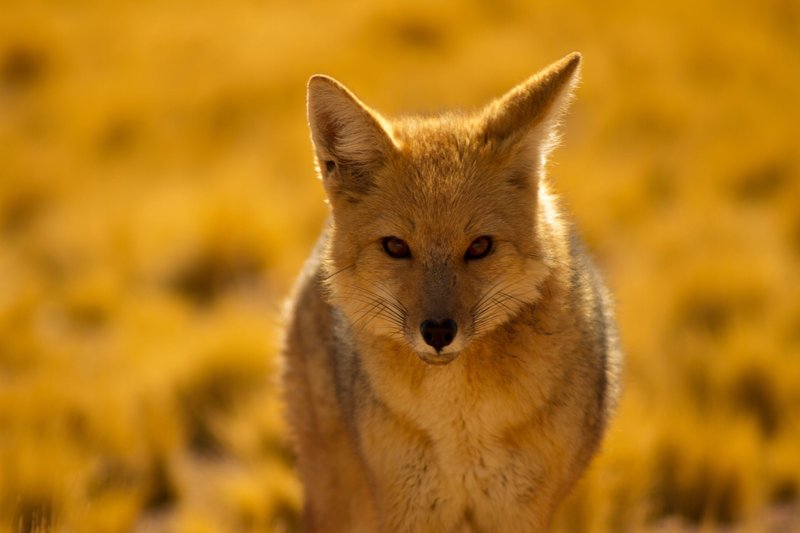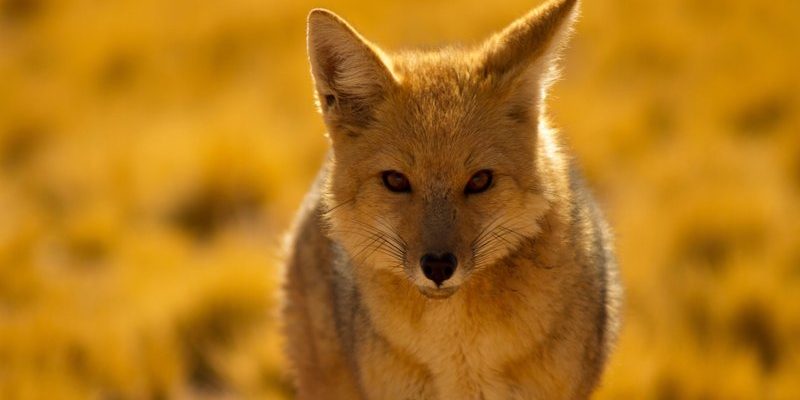
Imagine wandering through a vast, sandy expanse under the scorching sun, where the air shimmers with heat, and the horizon melts into a blur. This is the home of the Desert Fox, an extraordinary creature perfectly adapted to thrive in one of the harshest environments on Earth. With its large, fluffy ears and a sleek body, this little fox is not just a master of survival; it’s also a fascinating part of the desert ecosystem.
The Desert Fox, often referred to as the Fennec Fox, is known for its distinctive appearance and remarkable behaviors. These foxes have a playful demeanor and are primarily nocturnal, making them elusive and intriguing to witness. As we dive deeper into their world, you will discover the unique traits and habits that allow them to thrive in the arid desert landscape.
Physical Characteristics
The Desert Fox is easily recognizable due to its unique physical traits. One of the most notable features is its oversized ears, which can be as long as 6 inches. These ears serve multiple purposes: they help dissipate heat and enhance their hearing abilities, allowing them to detect prey beneath the sand. Their fur is a light cream color, which not only helps them blend into their surroundings but also reflects sunlight, keeping them cool during the day.
In terms of size, adult Fennec Foxes typically weigh between 2 to 3.5 pounds and measure around 24 inches long from nose to tail. Their small stature is an advantage when navigating narrow burrows in the sand, a skill that keeps them safe from larger predators. Additionally, their paws are uniquely adapted for desert life; they have fur on the bottom that protects them from hot sand while providing excellent traction.
These foxes exhibit sexual dimorphism, with males being slightly larger than females. This physical difference, though subtle, is common in many wildlife species and often plays a role in mating habits and territorial behaviors. Their adorable appearance, combined with practical adaptations, makes the Desert Fox a charming yet resilient inhabitant of the desert.
Habitat and Distribution
Desert Foxes are native to the sandy deserts of North Africa and parts of the Arabian Peninsula. They prefer arid environments where they can easily dig burrows to escape the midday heat. These burrows can extend up to 10 feet deep, providing shelter for the foxes and a safe place for their young. The Fennec Fox is typically found in the Sahara Desert, where the landscape is characterized by dunes, rocky plateaus, and sparse vegetation.
While they thrive in desert regions, Desert Foxes are also surprisingly adaptable. They can be found in scrublands and semi-arid habitats where there might be more vegetation. This adaptability allows them to find food sources and shelter even when the conditions of their primary habitat fluctuate due to climate changes.
Interestingly, despite their remote habitats, Desert Foxes have a well-established social structure. They often live in small family groups, which can help them manage resources effectively and protect each other from threats. Their ability to thrive in harsh conditions is a testament to their resilience and intelligence.
Diet and Feeding Habits
The diet of a Desert Fox primarily consists of small mammals, insects, and fruit. Their keen senses make them excellent hunters, able to locate prey even under the sand. They have a special technique for uncovering small rodents; they will leap into the air and pounce, capturing their meal with their sharp claws. This behavior isn’t just entertaining to watch, it’s a crucial survival skill that showcases their agility and prowess.
In addition to hunting, Desert Foxes are opportunistic feeders. They consume whatever food sources are available, which can include lizards, birds, and even carrion. During certain times of the year, they may supplement their diet with plant material, such as fruits and roots, which provide necessary hydration and nutrients when water is scarce.
Interestingly, these foxes have a fascinating way of adapting their eating habits based on availability. When prey is scarce, they are known to scavenge for food and use their intelligence to locate potential meals, whether it’s digging up a buried snack or stealing from other animals. This flexibility makes them not just survivors, but smart ones at that!
Behavior and Social Structure
Desert Foxes are known for their playful and curious nature. They communicate through a variety of sounds, including barks, whines, and growls. These vocalizations are essential for maintaining social bonds within their family groups, which are typically composed of a mated pair and their kits. Social structure is vital for their survival, as it allows for coordinated hunting and sharing of resources.
When the sun sets, the Desert Fox becomes active. They often use the cool of the night to hunt, reducing their exposure to the extreme heat of the day. Their nocturnal lifestyle is not just a matter of comfort; it’s a clever survival strategy that helps them avoid larger daytime predators and conserve energy.
The mating season occurs once a year, and after a gestation period of about 50 days, the female gives birth to typically 2 to 5 kits. The kits are born blind and helpless, relying entirely on their parents for food and protection. As they grow, the parents teach them essential survival skills, such as hunting and navigating their desert home, until they are independent around 8 weeks of age.
Conservation Status
Currently, the Desert Fox is not considered endangered, but their populations face threats from habitat loss and human encroachment. As deserts are transformed into agricultural land or urban areas expand, these foxes lose their natural habitat, making it harder for them to find food and shelter. Additionally, they are sometimes hunted or trapped due to misconceptions about their behavior or for sport.
Conservation efforts aim to protect the remaining habitats of the Desert Fox and raise awareness about their ecological role. Many wildlife organizations are working to promote coexistence strategies with local communities to reduce human-wildlife conflict. Education is a crucial part of these efforts, teaching people about the importance of preserving the delicate balance of desert ecosystems.
By supporting conservation initiatives, you can help ensure that future generations can appreciate the charm and beauty of the Desert Fox. Remember, it’s not just about protecting a single species; it’s about preserving the intricate web of life that exists in the deserts. Every little action can contribute to safeguarding their future!
Interesting Facts About Desert Foxes
| Scientific Name: | Vulpes zerda |
| Habitat: | North African and Arabian deserts |
| Size: | 24 inches in length |
| Weight: | 2 to 3.5 pounds |
| Diet: | Small mammals, insects, fruit |
| Lifespan: | Up to 10 years in the wild |
| Unique Adaptation: | Oversized ears for dissipating heat |
FAQ
What do Desert Foxes look like?
Desert Foxes are small, with a body length of about 24 inches and a weight ranging from 2 to 3.5 pounds. Their most distinctive feature is their large, floppy ears, which can reach up to 6 inches in length. They have a light cream-colored fur that blends beautifully with their sandy environment, helping them stay hidden from both prey and predators.
Where can I find Desert Foxes in the wild?
These foxes primarily inhabit the sandy deserts of North Africa, including the Sahara, as well as parts of the Arabian Peninsula. They prefer arid regions where they can dig burrows to escape the intense heat and find shelter from predators.
Are Desert Foxes social animals?
Yes! Desert Foxes typically live in small family groups consisting of a mated pair and their offspring. They communicate through various vocalizations, and their social structure helps them work together for hunting and protecting each other.
How do Desert Foxes survive in the heat?
Their large ears help dissipate heat, and they are primarily nocturnal, which means they are active at night when temperatures are lower. They also dig deep burrows that provide a cool retreat during the hottest parts of the day.
What is a Desert Fox’s diet?
Desert Foxes are omnivorous, feeding on small rodents, insects, fruits, and even carrion. They are opportunistic feeders, adapting their diet based on available food sources in their environment.
How long do Desert Foxes live?
In the wild, Desert Foxes can live up to 10 years. However, their lifespan can be shorter due to environmental threats, predation, and habitat loss.
Are Desert Foxes endangered?
While Desert Foxes are currently not classified as endangered, they face threats from habitat destruction and human activities. Conservation efforts are in place to protect their habitats and ensure their populations remain stable.
What role do Desert Foxes play in their ecosystem?
Desert Foxes play an important role in their ecosystem as both predators and prey. They help control the population of rodents and insects, while also providing food sources for larger predators. Their presence maintains a balance within the delicate desert ecosystem.
Can Desert Foxes be kept as pets?
While some people may consider keeping Desert Foxes as pets, they are wild animals with specific needs that can be difficult to meet in captivity. It is important to respect their natural behaviors and habitats and support conservation efforts instead of domestication.
How do Desert Foxes communicate?
Desert Foxes use a range of vocalizations, including barks, whines, and growls, to communicate with each other. Their social interactions are vital for maintaining bonds within their family groups and coordinating activities like hunting.
What adaptations help Desert Foxes in the desert environment?
Desert Foxes have several adaptations that allow them to survive in extreme conditions. Their large ears help with heat loss, and their thick fur protects them from the cold at night. Their paws are also adapted to prevent burns from hot sand, which is crucial for their mobility in their harsh habitat.

